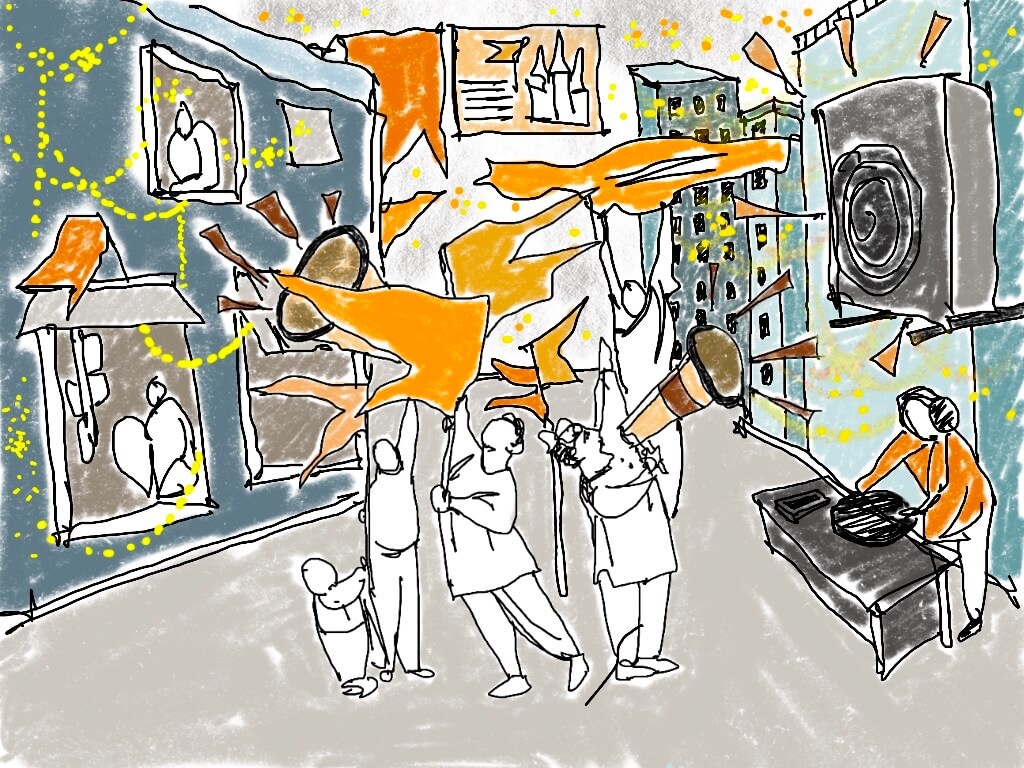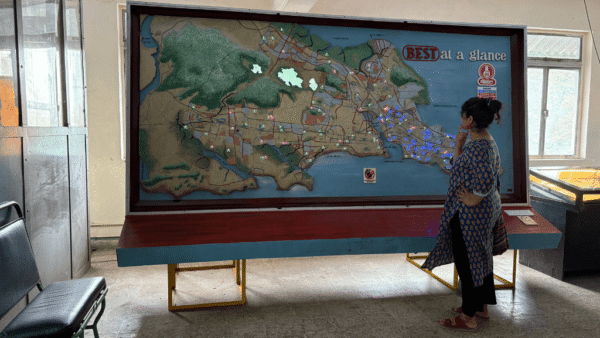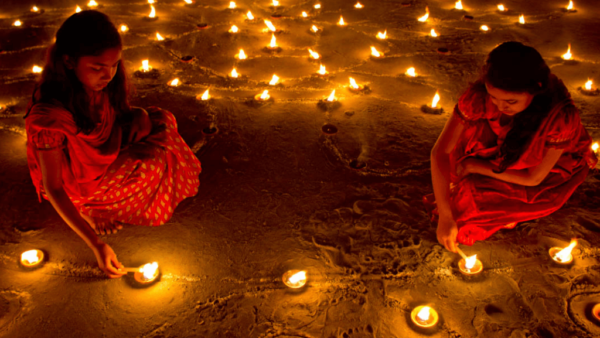Diwali announces itself with full gusto in our cities. Sparkling and colourful strings of lights go up on buildings, including government edifices. Markets burst at their seams with a mind-boggling array of goods and make-shift bazaars come up in cities with shoppers thronging them all. Advertising and promotions are all around. The legends and fables around the festival are enacted, revisited. Music plays at high volumes, firecrackers light up the darkened sky with their sounds punctuating the night. It’s that the time of the year when even the bleakest of places in cities and towns across India light up.
Cities across the world with a large number of Indian diasporas have taken to celebrating Diwali as the Indian festival. A few states across the US have declared it a public holiday.[1] From New York’s Times Square and London’s Trafalgar Square to countries like Fiji, Malaysia, Mauritius, Nepal, Sri Lanka, Singapore, South Africa, and Trinidad and Tobago, there are Diwali celebrations and holidays.
Diwali is, undoubtedly, a very public affair. Whether its appeal is purely cultural-religious or has benefited from a healthy dose of capitalist consumerism is open to debate but what is beyond contention is its popularity and its relationship to public space in cities and towns – the appropriation, use, territorial marking, identity assertion of space. Does the celebration of the festival of lights and sound, or the festival of triumph of good over evil, lead to the creation of public space in some way? Does it define or redefine existing public spaces? Is its claim to public space inclusive or does the public celebration now have a distinct and unmissable majoritarian character?
These are reflective questions. They are also urgent in new India as majoritarianism is unleashed in multiple ways.
Public spaces defined/redefined
Public space frames the image of a city. It takes, according to UN-Habitat, many spatial forms, including parks, streets and footpaths that connect, playgrounds of recreation, and marketplaces but also the “edge spaces” between buildings or roadsides which are often important spaces for the urban poor. Public space forms the setting for a panoply of activities – the ceremonial festivities of the multicultural city, trade for the commercial city, the movement of goods and people, provision of infrastructure, or the setting for community life and livelihoods of the urban poor such as street vendors or waste-pickers.
By definition and use, public spaces are accessible to one and all, and bring people or communities together in shared moments and activities. Or turn into community-specific spaces at certain times of the week or the year like Ganeshotsav in Maharashtra or Durga Puja in Bengal or Holi in the north, to name other festivals with a public character. It could be namaz offered on or Christmas prayers extending to public grounds.
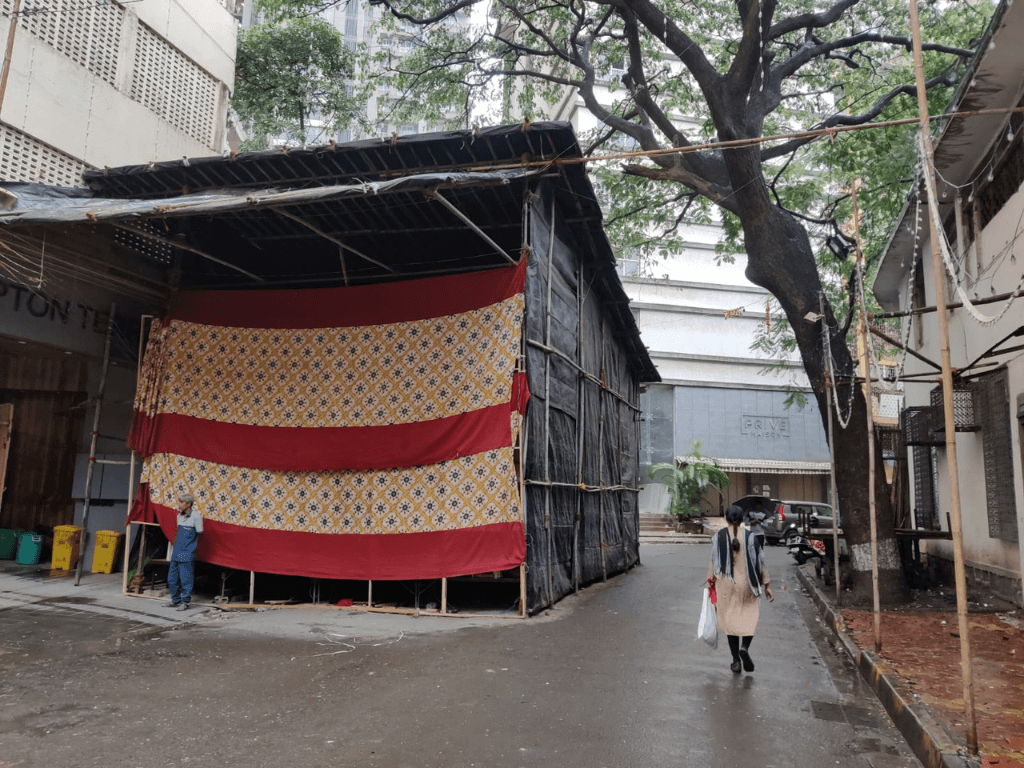
Photo: Jashvitha Dhagey
Those who celebrate occupy the public realm with an unmistakable sense of claim to the space, appropriating it as public space is meant to be. Festivals bring people together; some transcend religious lines and draw secular crowds too like the Mount Mary fest in Mumbai’s Bandra which brings people from different faiths and turns the suburb into a place of frenzied community activity. People come from afar, stay with relatives, take in the festivities in a shared way, enjoy a nice meal at the pop-up kitchens around, and buy knick-knacks from vendors who are an inalienable part of the festival – a community affair through and through.
Festival celebrations in public spaces do bring people together, of a community or from different communities. They allow people to feel they belong to a city. Observing the Chhath Puja in large numbers on the seafront helped bond Biharis in Mumbai better and assert their identity when political leaders attacked them for being Biharis. Re-enactments of old legends and mythologies associated with festivals, in public places like maidans and town squares, bond people in memorable shared moments.
And people’s participation can be called upon to make public spaces, cities, better as the revered sociologist, environmentalist, and town planner Patrick Geddes had done in Indore during the plague of 1918. Declaring new routes for a grand Diwali procession, he had people clean up almost every lane in the city. “This novel procession passed through almost every part of the city, finally ending at midnight in a public park where the giant of dirt and rats of plague were burned in a great bonfire. After the symbolic destruction of the enemies, the festival was brought to a close with a grand display of fireworks. The effect of the exercise was immediately apparent,” noted Dr Indra Munshi in her paper on Geddes.[2]
On a smaller scale, people’s participation in national events like Independence Day or Republic Day celebrations in neighbourhood parks and gardens, or in secular events like sports tournaments within a neighbourhood, creates its own kind of festive atmosphere and community.
The flip side
Public spaces are fluid and meant to be so, lending themselves to a variety of uses and appropriations. When different festivals are celebrated at the same space, they facilitate interactions and exchanges that go beyond the religious and cultural; they help create neighbourhoods by sharing space and nurture the social fabric. But what happens when celebrations in public spaces – maidans, streets, parks – turn pointedly disparaging of one community or openly use slurs against some or, worse, call for violence by trumping up people’s sentiments as the world of Hindutva pop music has been doing?
In the majoritarian India unfolding in front of us for the past decade or so, Hindu festivals seem to have a natural right to public space while festivals or prayers of other communities are either frowned upon or actively discouraged, often by governments as in Haryana.[3] This claim and use of public space is not new. Journalists had chronicled incidents back in 2018[4] when the likes of Laxmi Dubey, Delhi’s Sanjay Faizabadi, Ayodhya’s Sandeep Chaturvedi, Bikaner’s Narottam Ranga, to name a few, had raked up millions of views and hits on their YouTube channels with openly provocative numbers and incendiary lyrics against Muslims.
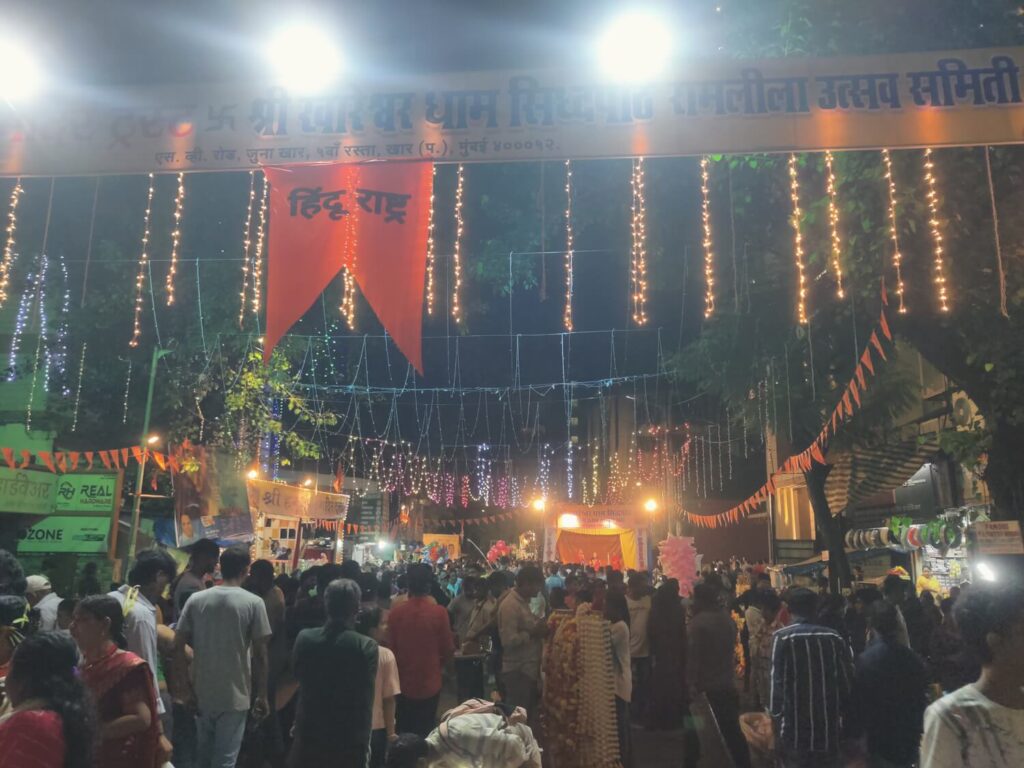
Photo: Jashvitha Dhagey
These were played loudly on streets as processions passed by mosques, stirring up emotions of young men participating in the processions who thought nothing of attacking Muslims or masjids along the route. This should have ideally attracted the full force of law; instead, the singers have become heroes and their faithful infuse streets and squares with the inflammatory music, vitiating the public realm. Journalist-author Kunal Purohit’s book H-Pop: The Secretive World of Hindutva Pop Stars delineates the growing popularity of the genre.[5] But what it has done to our public spaces remains to be studied even as such incidents, as part of some festival procession or another, pile up from across India. “While the rise of Hindu nationalist violence has led to uneasiness and fear among Muslims, many believe the Hindutva pop music phenomenon has worsened already strained relationships between communities,” noted the US-based weekly Time in December 2022.[6]
There’s a flip side too. In Navi Mumbai’s Taloja area, on the eve of Diwali, a Muslim man objected to Hindus lighting the residential building – a shared common space – which escalated into a police case.[7] Online conversations showed that many Muslims condemned this but Hindutva followers find an equivalence. There is, however, an inescapable difference of scale and attack.
When Bakri Eid meant slaughtering goats in open public spaces, with trails of blood and more flowing around which offended many Hindus, some areas chose dialogue to address the issue. Speaking to and sensitising Muslims helped to avoid the use of public spaces that revolted some, irrespective of the poignancy of the occasion for others. There have been times when Muslim religious or community leaders have agreed, on requests of governments, to postpone their processions; Mumbai’s Eid-e-Milad procession was taken out on September 18 this year though it was celebrated the previous day because Ganesh Visarjan fell on September 17.[8] This was a repeat of what had happened in Surat last year.[9]
Beyond festival economics
While it is true that festivals become the raison d’etre for entire networks of economy to roll out goods and services to cater to the surging demand, it is equally true that the festivalisation of spaces introduces or entrenches socio-political aspects. As researchers Rebecca Finkel, professor of Critical Event Studies in Queen Margaret University, Edinburgh, and Louise Platt at Manchester University eloquently wrote in their 2020 paper,[10] the role that festivals play in urban settings is “contested” and festivals now show “complex and uneasy tensions” between strategies of commericalised neo-liberal cities and cultural needs of diverse communities in them.
“Festivals have often been bridges between people and places, linking personal geography with collective experiences and therefore increasingly of interest to cultural geographers. However, festivals also have social, economic and political aspects that are constructed by societal influences of the time and place…It is simply no longer possible to say that festivity is a simple rupture in the mundanity of everyday life of urban citizens; rather, contemporary cultural festivals now exhibit complex and uneasy tensions between the socio-economic strategies of commercialised neoliberal cities and the cultural needs of diverse communities to gather and celebrate,” they observed.
Their paper demonstrates that cultural festivals and cities have an ongoing relationship “which is now mainly commercialised and politicised”. But commercialised and politicised by whom and for whom are questions that must be asked. The Dahi Handi celebrations across Maharashtra’s cities, with the pot of goodies tied at unrealistic heights of 40-50 metres and above, and carrying lakhs as prize money sponsored by politicians by different parties – often rivals competing – is indeed the politicisation of what used to be an endearing re-enactment of the story or Krishna as a naughty child. The leitmotif repeats across festivals and cities.
In Kerala, where artistic practices became part of the state’s cultural policy nearly 20 years before the advent of Hindu nationalist organisations, there’s a marked difference in how the Marxists and Hindutva organisations use the arts, performances, motifs and public space, wrote Christine Guillebaud, social anthropologist and ethno-musicologist, in her paper ‘Music and Politics in Kerala: Hindu Nationalists Versus Marxists’.[11]
“Faced with the powerful cultural entrenchment of their opponents, Hindu nationalists have been compelled to base part of their activities on what had already been achieved in terms of documentation and education. However, I have highlighted their very contrasting methods as well as the fundamental discrepancies in how they conceive national culture. The number of Hindu nationalist organisations has grown thanks to the ambiguous relationship they have cultivated with local performers and children, while spreading a discourse based on cultural unification which goes beyond the effective involvement of the people targeted,” she concluded.
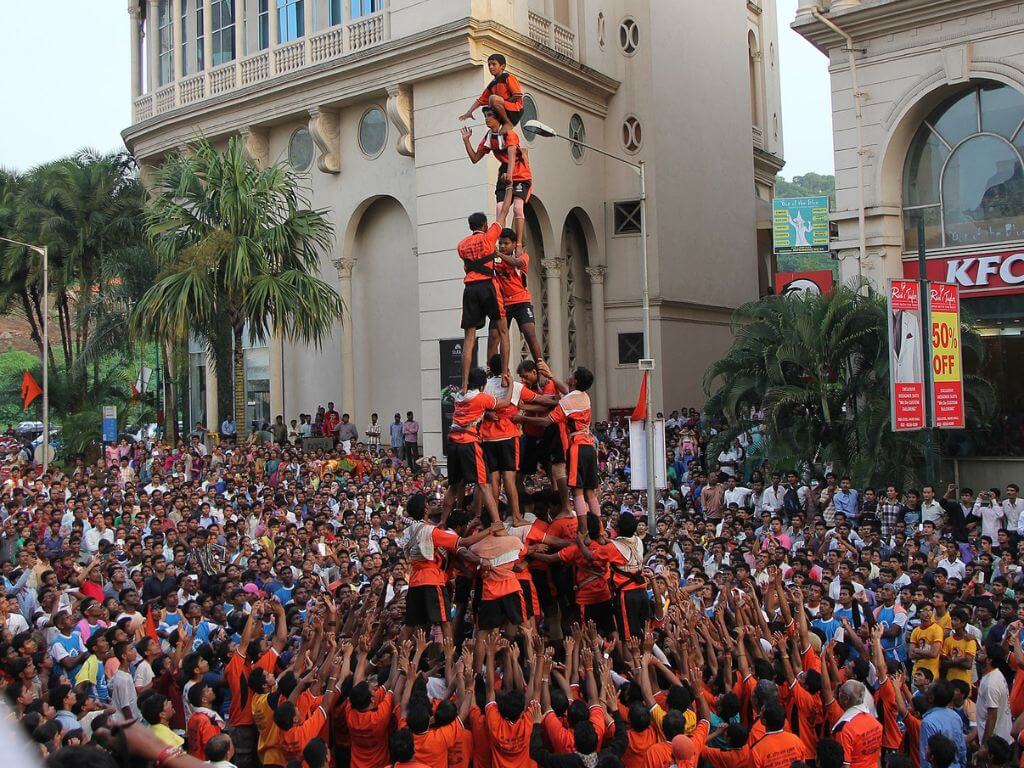
Photo: Wikimedia Commons
Apolitical space?
To assume that public spaces are devoid of politics, covert or overt, is among the urban myths many hold. Even when residential patterns remain segregated, as they tend to be in many cities, public spaces are where different social groups come into contact, suggests Teresa Caldeira, anthropologist and Professor of Planning, University of California, Berkeley. In fact, “openness”, “accommodation of difference” and “equality” are the hallmarks of modern, democratic and urban public space, according to her.[12] These hallmarks are, undoubtedly, political.
The way architects build public spaces, or leave edge spaces in cities which are then claimed by people, may not be overtly political but once these spaces are appropriated for uses, especially cultural or cultural-religious, they do get suffused with political textures. Squares, by themselves, may not be political but when there are objections to namaaz offered or Ram Leela enacted there, the space acquires political overtones. Streets bearing Ram Navami processions acquire a political patina when people in the processions turn from religious celebration to political signalling or dog-whistling against Muslims.
Diwali celebrations, less obviously partisan, are still a subtle assertion by communities about their citizenship and rights to public spaces – who can claim them, who gets to use them for what purpose, and, therefore, who is left out. Celebrations are hardly apolitical.
Smruti Koppikar is a Mumbai-based award-winning journalist, urban chronicler, and media educator. She has more than three decades experience in newsrooms in writing and editing capacities, she focussed on urban issues in the last decade while documenting cities in transition with Mumbai as her focus. She was a member of the group which worked to include gender in Mumbai’s Development Plan 2034 and is the Founder Editor of Question of Cities.
Cover Illustration: Nikeita Saraf

